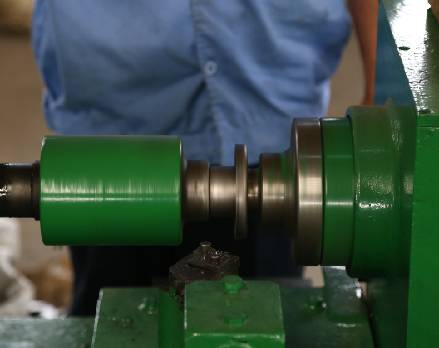 Afrikaans
Afrikaans  Albanian
Albanian  Amharic
Amharic  Arabic
Arabic  Armenian
Armenian  Azerbaijani
Azerbaijani  Basque
Basque  Belarusian
Belarusian  Bengali
Bengali  Bosnian
Bosnian  Bulgarian
Bulgarian  Catalan
Catalan  Cebuano
Cebuano  Corsican
Corsican  Croatian
Croatian  Czech
Czech  Danish
Danish  Dutch
Dutch  English
English  Esperanto
Esperanto  Estonian
Estonian  Finnish
Finnish  French
French  Frisian
Frisian  Galician
Galician  Georgian
Georgian  German
German  Greek
Greek  Gujarati
Gujarati  Haitian Creole
Haitian Creole  hausa
hausa  hawaiian
hawaiian  Hebrew
Hebrew  Hindi
Hindi  Miao
Miao  Hungarian
Hungarian  Icelandic
Icelandic  igbo
igbo  Indonesian
Indonesian  irish
irish  Italian
Italian  Japanese
Japanese  Javanese
Javanese  Kannada
Kannada  kazakh
kazakh  Khmer
Khmer  Rwandese
Rwandese  Korean
Korean  Kurdish
Kurdish  Kyrgyz
Kyrgyz  Lao
Lao  Latin
Latin  Latvian
Latvian  Lithuanian
Lithuanian  Luxembourgish
Luxembourgish  Macedonian
Macedonian  Malgashi
Malgashi  Malay
Malay  Malayalam
Malayalam  Maltese
Maltese  Maori
Maori  Marathi
Marathi  Mongolian
Mongolian  Myanmar
Myanmar  Nepali
Nepali  Norwegian
Norwegian  Norwegian
Norwegian  Occitan
Occitan  Pashto
Pashto  Persian
Persian  Polish
Polish  Portuguese
Portuguese  Punjabi
Punjabi  Romanian
Romanian  Russian
Russian  Samoan
Samoan  Scottish Gaelic
Scottish Gaelic  Serbian
Serbian  Sesotho
Sesotho  Shona
Shona  Sindhi
Sindhi  Sinhala
Sinhala  Slovak
Slovak  Slovenian
Slovenian  Somali
Somali  Spanish
Spanish  Sundanese
Sundanese  Swahili
Swahili  Swedish
Swedish  Tagalog
Tagalog  Tajik
Tajik  Tamil
Tamil  Tatar
Tatar  Telugu
Telugu  Thai
Thai  Turkish
Turkish  Turkmen
Turkmen  Ukrainian
Ukrainian  Urdu
Urdu  Uighur
Uighur  Uzbek
Uzbek  Vietnamese
Vietnamese  Welsh
Welsh  Bantu
Bantu  Yiddish
Yiddish  Yoruba
Yoruba  Zulu
Zulu Understanding the Functionality and Importance of Non-Drive Pulleys in Mechanical Systems
Understanding Non-Drive Pulleys and Their Applications
In the realm of mechanical engineering and design, pulleys play an invaluable role in the transmission of power and motion. Among the various types of pulleys, non-drive pulleys stand out as critical components that contribute to the overall efficiency and functionality of multiple systems. This article delves into the nature of non-drive pulleys, their design, applications, and significance in different industries.
Definition and Function
A non-drive pulley, as the term suggests, is not connected to a power source or a drive mechanism. Rather, it serves to redirect or manage the motion of a belt or a cable. These pulleys can be found in a variety of setups, performing essential tasks that enhance system performance without directly contributing to power output. By providing guidance for belts or cables, non-drive pulleys help reduce friction and wear, optimizing the efficiency of the entire assembly.
Types of Non-Drive Pulleys
Non-drive pulleys can be categorized into several types based on their design and application
1. Idler Pulleys These are used to guide and support the belt without transmitting power. They are commonly found in conveyor systems and mechanical devices where belt tension needs to be maintained.
2. Tensioner Pulleys These pulleys maintain appropriate tension in a belt drive system. By adjusting tension, they prevent slippage and ensure that the belt makes efficient contact with the drive pulley.
3. Redirector Pulleys As the name suggests, these pulleys redirect the path of a belt or cable, allowing it to change direction without loss of power. They are essential in various applications, including elevators and crane systems.
Advantages of Non-Drive Pulleys
The advantages of utilizing non-drive pulleys are multifaceted
1. Efficiency By facilitating smoother motion of belts and cables, non-drive pulleys decrease energy loss due to friction, resulting in a more energy-efficient system.
non drive pulley

2. Longevity Non-drive pulleys enhance the lifespan of belt systems by reducing wear and tear. Properly maintained pulleys can significantly extend the life of vital components in a machine.
3. Versatility Non-drive pulleys can be employed in a diverse range of applications, from vehicles to industrial machinery and robotics. Their adaptability makes them suitable for both simple and complex systems.
4. Compact Design Many non-drive pulleys have a compact design, which allows them to be incorporated into tight spaces without compromising functionality. This is particularly important in modern machinery where space constraints are a concern.
Applications Across Industries
Non-drive pulleys serve a myriad of purposes across various industries.
- Automotive Within vehicles, non-drive pulleys are vital components in engine systems, helping to manage the timing belts and serpentine belts that control various engine functions.
- Material Handling In construction and manufacturing contexts, non-drive pulleys facilitate the movement of materials. Conveyor systems equipped with idler pulleys allow for the seamless transport of goods from one point to another.
- Entertainment and Theatre Non-drive pulleys are fundamental in stage rigging systems, assisting in the movement of sets and lighting with precision.
- Aerospace and Aviation In aircraft, non-drive pulleys are used in control mechanisms, where precise direction and tension of control cables are critical for safety and performance.
Conclusion
Non-drive pulleys, though often overlooked in comparison to their drive counterparts, are essential to the successful operation of numerous systems across industries. By understanding their function and applications, engineers and designers can optimize their designs for efficiency, longevity, and versatility. As technology continues to evolve, the role of non-drive pulleys will undoubtedly expand, further solidifying their importance in modern mechanical systems.
-
Revolutionizing Conveyor Reliability with Advanced Rubber Lagging PulleysNewsJul.22,2025
-
Powering Precision and Durability with Expert Manufacturers of Conveyor ComponentsNewsJul.22,2025
-
Optimizing Conveyor Systems with Advanced Conveyor AccessoriesNewsJul.22,2025
-
Maximize Conveyor Efficiency with Quality Conveyor Idler PulleysNewsJul.22,2025
-
Future-Proof Your Conveyor System with High-Performance Polyurethane RollerNewsJul.22,2025
-
Driving Efficiency Forward with Quality Idlers and RollersNewsJul.22,2025





























